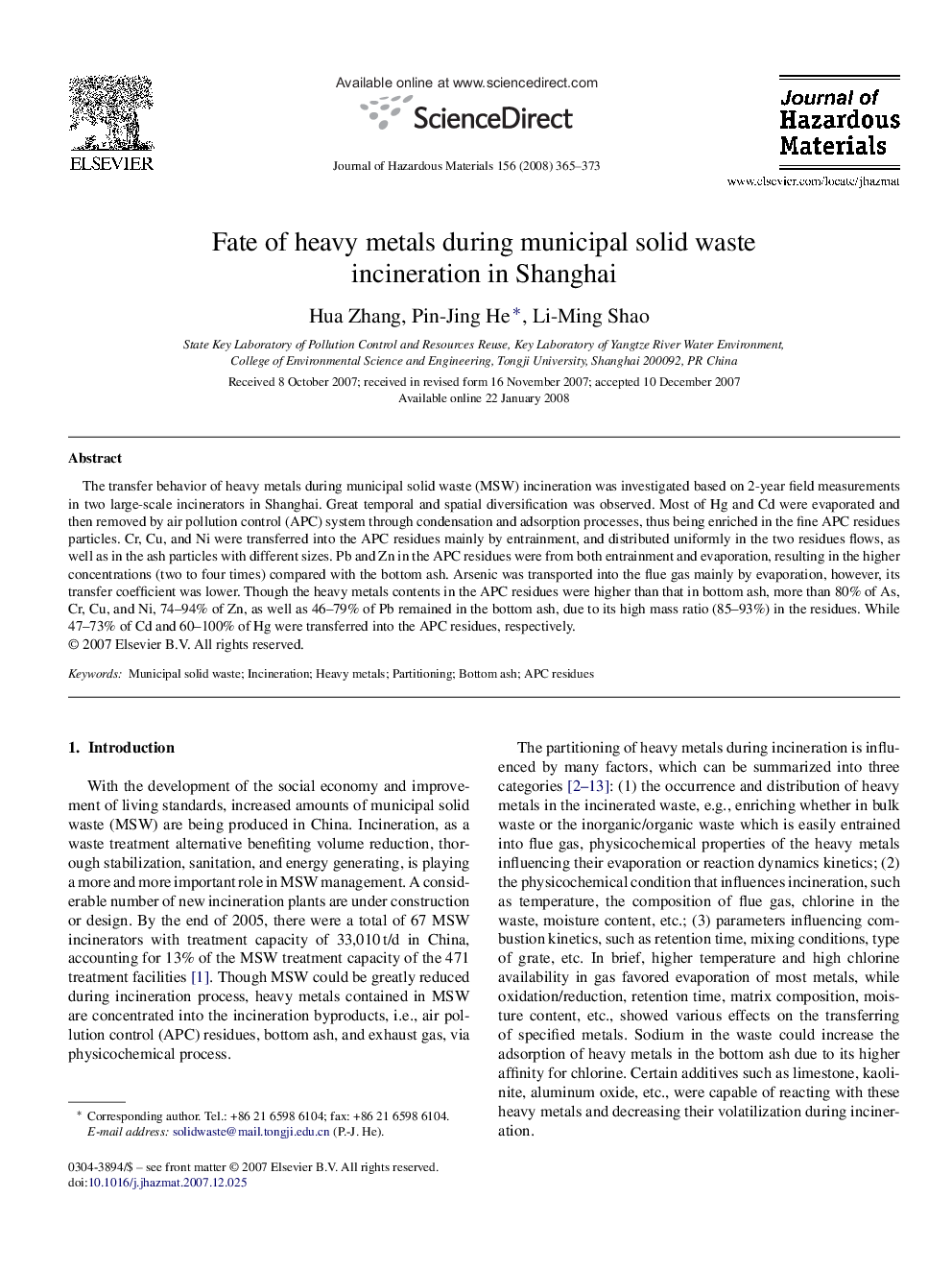| Article ID | Journal | Published Year | Pages | File Type |
|---|---|---|---|---|
| 583249 | Journal of Hazardous Materials | 2008 | 9 Pages |
Abstract
The transfer behavior of heavy metals during municipal solid waste (MSW) incineration was investigated based on 2-year field measurements in two large-scale incinerators in Shanghai. Great temporal and spatial diversification was observed. Most of Hg and Cd were evaporated and then removed by air pollution control (APC) system through condensation and adsorption processes, thus being enriched in the fine APC residues particles. Cr, Cu, and Ni were transferred into the APC residues mainly by entrainment, and distributed uniformly in the two residues flows, as well as in the ash particles with different sizes. Pb and Zn in the APC residues were from both entrainment and evaporation, resulting in the higher concentrations (two to four times) compared with the bottom ash. Arsenic was transported into the flue gas mainly by evaporation, however, its transfer coefficient was lower. Though the heavy metals contents in the APC residues were higher than that in bottom ash, more than 80% of As, Cr, Cu, and Ni, 74-94% of Zn, as well as 46-79% of Pb remained in the bottom ash, due to its high mass ratio (85-93%) in the residues. While 47-73% of Cd and 60-100% of Hg were transferred into the APC residues, respectively.
Related Topics
Physical Sciences and Engineering
Chemical Engineering
Chemical Health and Safety
Authors
Hua Zhang, Pin-Jing He, Li-Ming Shao,
